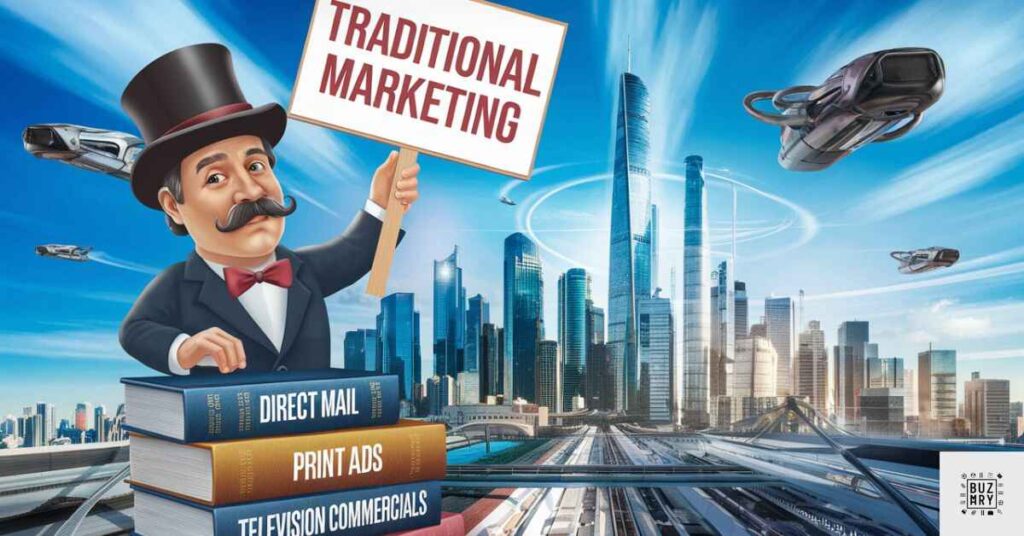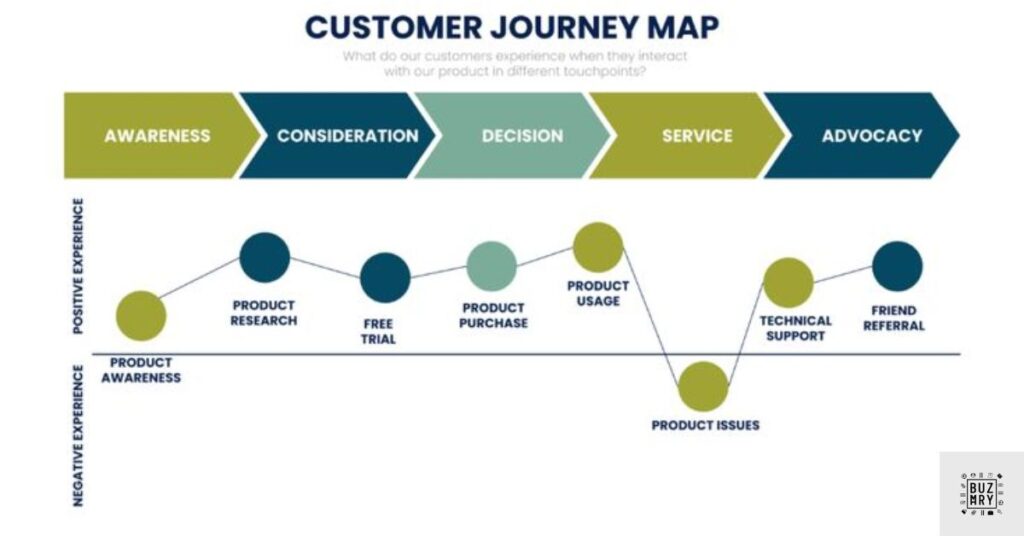The marketing landscape has shifted dramatically, leaving many businesses struggling to connect with their audience. Traditional strategies no longer deliver the results they once did, and marketers face diminishing returns on their efforts.
This disconnect between brands and consumers is widening, threatening business growth and sustainability. However, a solution exists: reset marketing. Businesses can unlock fresh opportunities in 2024 by reimagining and restructuring marketing approaches.
This comprehensive reset allows companies to realign with evolving consumer behaviors, leverage new technologies, and create more meaningful connections. Reset marketing offers a path forward, enabling businesses to thrive in the rapidly changing digital ecosystem.
The Evolving Marketing Landscape
Marketing has changed rapidly in recent years. Digital platforms now dominate consumer attention. Social media and mobile devices have altered how people interact with brands. Data analytics provide deep insights into customer behavior.
Artificial intelligence and automation streamline marketing processes. These shifts require businesses to adapt their strategies quickly to stay relevant.
Why Traditional Marketing Approaches Fall Short

Old marketing methods no longer work as well. TV ads and print materials reach fewer people. Mass marketing ignores individual preferences. Consumers now expect personalized experiences.
Traditional approaches often lack the flexibility to respond to rapid market changes. They also struggle to measure effectiveness accurately. This leads to wasted budgets and missed opportunities for engagement.
The Promise of Reset Marketing
Reset marketing offers a fresh start for businesses. It aligns strategies with current consumer needs and behaviors. This approach embraces new technologies and data-driven insights. It allows for more targeted and effective campaigns. Reset marketing can lead to improved customer relationships and increased brand loyalty. It also provides better ROI by focusing resources on the most impactful channels and tactics.
How Did We Get So Far Off Track?

Marketing strategies became outdated over time. Many businesses failed to keep up with technological advancements. They stuck to familiar methods, even as consumer habits changed. Some companies prioritized short-term gains over long-term relationships.
Others ignored valuable data insights. The fast pace of digital transformation left many marketers struggling to adapt. These factors combined to create a disconnect between brands and their audiences.
The Product-Centric Trap
Many businesses place too much emphasis on their products rather than focusing on their customers. They emphasize features and specifications over customer needs. This approach often leads to tone-deaf marketing messages.
It can make customers feel unheard and undervalued. Product-centric marketing often fails to address real customer pain points. It can result in lower engagement and missed opportunities for meaningful connections.
Ignoring Changing Consumer Behaviors
Consumer preferences have shifted dramatically. Many businesses failed to notice or respond to these changes. They continued using outdated marketing tactics. This led to decreased effectiveness and wasted resources.
Ignoring new platforms and channels left companies out of important conversations. It also made them seem out of touch with their target audience. Adapting to changing consumer behaviors is essential for achieving marketing success.
Over-Reliance on Outdated Metrics
Using the wrong metrics can lead marketing efforts astray. Many businesses still focus on vanity metrics that don’t reflect true impact. They might track page views instead of conversions, or followers instead of engagement. This can create a false sense of success. It may also lead to poor decision-making and resource allocation. Modern marketing requires more nuanced, actionable metrics that align with business goals.
Start with the Customer, Not with the Product
Successful marketing starts with understanding customers. Focus on their needs, wants, and pain points. This approach leads to more effective campaigns and stronger relationships. It helps create products and services that truly solve problems. Customer-centric marketing increases satisfaction and loyalty. It also helps businesses stay relevant in changing markets.
Understanding Your Target Audience
Know your customers deeply. Use surveys, interviews, and data analysis to learn about them. Create detailed customer personas. These profiles help you understand motivations and behaviors. Segment your audience based on common characteristics. This allows for more targeted marketing efforts. Regularly update your audience insights to stay current.
Mapping the Customer Journey

Develop a visual map that outlines how customers engage with your brand. Identify all touchpoints, from awareness to purchase and beyond. This map helps you understand the customer experience. It reveals opportunities for improvement and innovation. Use the journey map to create more effective marketing strategies. Focus on delivering value at each stage of the journey.
Developing Customer-Centric Value Propositions
Craft value propositions that address specific customer needs. Develop a visual map that outlines how customers engage with your brand. Use clear, benefit-focused language. Experiment with various value propositions to determine which one resonates best. Regularly update your propositions as customer needs evolve. A compelling value proposition distinguishes you from your competitors.
Be Clear on What You Wish to Achieve
Set specific, measurable marketing goals. These guide your strategies and tactics. Clear objectives help teams focus their efforts. They also simplify the process of measuring success. Align marketing goals with overall business objectives. This ensures marketing contributes to company growth.
Defining Clear Marketing Objectives
Utilize the SMART criteria: Specific, Measurable, Achievable, Relevant, and Time-bound. For example: “Increase website conversions by 15% in the next quarter.” Break larger goals into smaller, actionable targets. Consistently evaluate and modify objectives according to performance results and market developments. Clear objectives help teams stay focused and motivated.
Read This Blog: Marketing Automation Tools Sleek Flow: Boost Your Marketing Efficiency
Aligning Marketing Goals with Business Objectives
Ensure marketing efforts support overall business goals. Meet with leadership to understand company priorities. Translate business objectives into specific marketing targets. For example, if the business goal is to enter a new market, set marketing objectives for brand awareness in that region. Regular communication between marketing and other departments is key.
Establishing Key Performance Indicators (KPIs)
Select KPIs that are directly aligned with your marketing objectives. Focus on metrics that indicate real business impact. Examples include conversion rates, customer lifetime value, and return on ad spend. Incorporate both leading and lagging indicators. Set up systems to track these KPIs regularly. Use the data to make informed decisions and adjust strategies as needed.
Find a New Audience

Expanding your customer base is crucial for growth. Look for new markets that align with your offerings. Research emerging trends and demographic shifts. Consider adjacent markets where your products or services could provide value. Develop strategies to reach and engage these new audiences.
This might involve new marketing channels or partnerships. Remember, finding new audiences often requires patience and consistent effort.
Conducting Market Research for New Opportunities
Use various research methods to identify potential new markets. Analyze industry reports and consumer trends. Conduct surveys and interviews with potential customers. Look at competitor activities for insights. Incorporate both leading and lagging indicators.Consider both demographic and psychographic factors. Evaluate the size and potential profitability of each new market segment.
Developing Personas for New Target Audiences
Create detailed profiles of your potential new customers. Incorporate demographic details such as age, income, and location. Add psychographic details such as interests, values, and behaviors.
Use real data and market research to inform these personas. Assign a name and backstory to each persona to make them more realistic. Leverage these profiles to shape your marketing strategies and content development.
Tailoring Your Message for New Audiences
Adapt your marketing messages to resonate with new customer groups. Understand their specific needs, pain points, and preferences. Use language and references that are familiar to them. Emphasize the product benefits that are most relevant to this audience.
Test different messages to see what works best. Ensure authenticity and steer clear of stereotypes when engaging with new groups.
Also Read This Blog: Stock Market FintechZoom: Investment Strategies for 2024
Refresh Your Content
Revitalize your content marketing to keep it relevant and engaging. Review and update existing content regularly. Create new content that addresses current customer needs and interests. Experiment with different content formats like videos, podcasts, or interactive tools.
Make sure your content matches your brand voice and marketing objectives. Fresh, valuable content helps maintain audience interest and improves SEO.
Auditing Your Existing Content
Conduct a thorough review of all your content assets. Assess each piece for relevance, accuracy, and performance. Update outdated information and improve SEO elements. Identify top-performing content for insights. Remove or archive content that no longer serves your goals. Use analytics to understand which content resonates most with your audience. This audit helps focus your content efforts effectively.
Identifying Content Gaps and Opportunities
Analyze your content to find topics you haven’t covered. Look at frequently asked questions from customers. Research trending topics in your industry. Conduct keyword research to identify topics with high demand and low competition. Consider creating content for different stages of the customer journey. Look for opportunities to repurpose existing content in new formats.
Creating a Dynamic Content Calendar
Develop a flexible plan for future content creation. Include a mix of timely and evergreen topics. Align content with key business events and marketing campaigns. Leave room for reactive content based on current events or trends. Conduct keyword research to identify topics with high demand and low competition. Frequently update and modify the calendar according to performance data and shifting priorities.
Get Out More
Don’t limit yourself to familiar marketing methods. Explore new channels and approaches. This keeps your marketing fresh and effective. It helps you reach new audiences and engage existing ones in new ways. Try different platforms and technologies. Be open to unconventional ideas. Learning about new marketing trends can spark creativity and innovation in your strategies.
Exploring Emerging Marketing Channels
Stay informed about new marketing platforms and technologies. Research emerging social media networks and digital tools. Consider how these new channels might fit your marketing goals. Test different platforms to see what works for your audience. Be prepared to adapt quickly as new trends emerge. Remember, not every new channel will be right for your brand.
Embracing Experiential Marketing
Create memorable experiences for your customers. This could be through events, interactive displays, or virtual reality. Experiential marketing engages multiple senses and creates emotional connections. It helps your brand stand out in a crowded market. Focus on creating value and solving problems for your customers. Measure the impact of these experiences on brand perception and loyalty.
Collaborating with Influencers and Partners
Work with influencers and other brands to expand your reach. Choose partners that align with your brand values. Develop mutually beneficial relationships. Be clear about goals and expectations. Measure the results of these collaborations. Remember, authenticity is key in influencer partnerships. Focus on creating genuine connections with your target audience.
Prioritize Your Current Clients
Focus on keeping your existing customers happy. It is usually more efficient and cost-effective than gaining new customers. Develop strategies to increase customer loyalty. Regularly communicate with your clients. Offer exclusive benefits or early access to new products. Keep in mind that satisfied customers often turn into your strongest brand advocates.
Implementing Customer Retention Strategies
Create a loyalty program that offers real value. Provide excellent customer service consistently. Send personalized communications based on customer preferences. Offer special discounts or rewards for repeat business. Create a community around your brand. Regularly ask for feedback and act on it. Show appreciation for your long-term customers.
Upselling and Cross-Selling to Current Clients
Identify opportunities to offer additional products or services. Understand your customers’ needs and preferences. Suggest complementary items that add value. Train your team to recognize upselling opportunities. Use data to make personalized recommendations. Be helpful, not pushy. Focus on how these additional offerings benefit the customer.
Leveraging Customer Feedback for Improvement
Actively seek feedback from your clients. Use surveys, interviews, and social media listening. Examine this feedback to pinpoint improvement areas and take action based on the insights. Inform customers about how their feedback has driven changes. This shows you value their input. Continuous improvement based on feedback helps maintain customer satisfaction.
Measuring the Success of Your Reset Marketing Strategy
Consistently evaluate the effectiveness of your updated marketing strategy. Use a mix of quantitative and qualitative metrics. Compare results to your initial goals. Look at both short-term gains and long-term trends. Be prepared to adjust your strategy based on these measurements. Remember, success may look different for each marketing initiative.
Tracking Key Performance Indicators
Identify the most important metrics for your business. These might include conversion rates, customer acquisition cost, or engagement levels. Use analytics tools to track these KPIs regularly. Create dashboards for easy monitoring. Identify patterns and trends within the data. Use this information to make informed decisions about your marketing efforts.
Conducting Regular Marketing Audits
Schedule periodic reviews of your entire marketing strategy. Assess what’s working well and what isn’t. Examine your marketing mix, messaging, and performance across channels. Compare your efforts to industry benchmarks. Identify areas for improvement or optimization. Use these audits to refine your marketing plan and allocate resources effectively.
Adapting Your Strategy Based on Results
Use your performance data to guide strategy https://www.mindtools.com/adjustments. Be prepared to adjust your strategy when something isn’t effective. Experiment with new approaches based on insights from your data. Celebrate and build on successful tactics. Stay agile and responsive to changes in your market. Remember, marketing is an ongoing process of learning and improvement.
Conclusion
Reset marketing offers a vital opportunity for businesses to realign with the shifting digital landscape in 2024. As traditional methods lose impact, embracing new technologies, consumer behaviors, and data-driven strategies becomes crucial.
Resetting your marketing efforts allows for more personalized, effective campaigns that build stronger connections with your audience. This approach not only improves customer engagement but also boosts ROI by focusing resources on what truly matters. Ultimately, reset marketing paves the way for sustainable growth and success in an ever-evolving market.
Frequently Asked Question
What is reset marketing?
Reset marketing involves reimagining and restructuring marketing strategies to align with evolving consumer behaviors and new technologies for better results.
Why is reset marketing important in 2024?
In 2024, reset marketing is crucial as traditional methods are becoming less effective, and businesses need to adapt to changing digital trends to stay competitive.
How can I start implementing a reset marketing strategy?
Begin by analyzing current market trends, understanding your audience, and leveraging data-driven insights to realign your strategies with modern marketing tools.
What are the key benefits of reset marketing?
Key benefits include improved customer engagement, higher ROI, and the ability to create more targeted, meaningful campaigns that resonate with today’s consumers.
How often should I reassess my marketing strategy?
It’s essential to reassess your marketing strategy quarterly or after major campaigns to ensure it stays aligned with current market trends and business goals.
Mr. Harry is the author of the business category on buzsmarty.com. With a keen understanding of market trends, he provides practical insights to help readers navigate the business world. His writing is clear, concise, and focused on delivering actionable advice. Mr. Harry’s expertise makes complex topics accessible to everyone, empowering readers to achieve their business goals.



